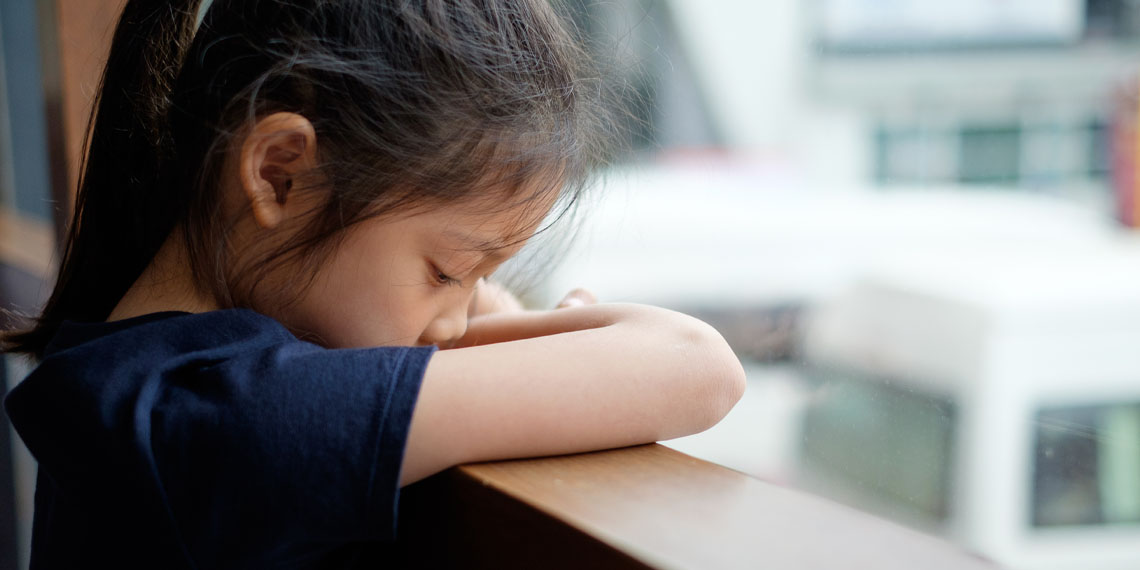Maltreatment in childhood might lead to sleep problems later in life, study finds
Maltreatment in childhood might lead to sleep problems later in life ... PsyPost


A Study on the Impact of Childhood Maltreatment on Sleep Quality in China

A study of young people in China has found that maltreatment in childhood might lead to sleep problems later in life. This connection between maltreatment and subsequent sleep problems may be influenced by emotion regulation. The study was published in Development and Psychopathology.
The Importance of Sleep for Sustainable Development Goals (SDGs)
To ensure optimal health and functionality, one must achieve sufficient sleep. The body undergoes both physical and mental rejuvenation during deep sleep—repairing tissues, solidifying memories, and balancing emotions. Sleep is fundamental for cognitive tasks such as learning, problem-solving, and decision-making. Proper rest significantly bolsters mental capability. Moreover, good sleep is essential for a robust immune system, hormonal balance, and the prevention of numerous health complications.
Sleep Issues in China
However, a considerable number of individuals face sleep disturbances. Sleep issues are characterized by patterns of insufficient or erratic sleep, resulting in the person feeling unrested. Sleep disturbances can also include disrupted or poorly timed sleep. Young adults in China report more sleep problems than younger children and early teens. A recent meta-analysis indicated that 26% of young adults face sleep issues. Many of these adults often sleep fewer than six hours nightly.
The Impact of Childhood Maltreatment on Sleep Quality
The lead researcher, Sihan Liu of Beijing Normal University, and his team sought to investigate the impact of childhood maltreatment on sleep quality in adulthood. They hypothesized that maltreatment during the pivotal developmental years of childhood could disrupt an individual’s ability to manage emotions.
Children who experience maltreatment might struggle with employing various strategies to modulate their emotional reactions. Such challenges could give rise to sleep issues both in childhood and adulthood. Emotion regulation techniques might serve as the link between early-life maltreatment and subsequent sleep quality.
The Study Design and Participants
The study involved young individuals from the Youths’ Well-Being Project in mainland China conducted between 2019 and 2020. 1,929 participants, ranging from 16 to 22 years old, participated across two study intervals and met the researchers’ quality criteria for responses. Of these participants, 63% were female, 55% lived in rural areas, 14% in suburban locales, and 31% in urban settings. 85% hailed from cohesive families. 32% had fathers, and 30% had mothers with education beyond high school.
Participants filled out online questionnaires at the study’s onset and again a year later. These surveys gauged childhood maltreatment (via the Childhood Trauma Questionnaire – Short Form), emotion regulation strategies (using the Emotion Regulation Questionnaire), and sleep disturbances (assessed by the Pittsburgh Sleep Quality Index). They also provided details about age, gender, family location, parents’ marital status, their own educational attainment, and household income.
Findings and Implications
The evaluation of childhood maltreatment data enabled the researchers to pinpoint three primary maltreatment profiles. 91.6% of participants fell into the “low maltreatment exposure” category, having reported minimal or no childhood abuse. 4.7% were categorized under “high physical and emotional maltreatment”, indicating significant physical and emotional harm but negligible sexual abuse. 3.7% were labeled as “high sexual abuse” participants, revealing substantial sexual maltreatment but minor physical or emotional abuse.
A higher proportion of females was observed in the “low maltreatment exposure” group compared to the other two categories. Those revealing high physical and emotional maltreatment often had unmarried parents. Interestingly, participants with more educated parents were predominantly found in the high physical and emotional maltreatment category.
Individuals from the “high physical and emotional maltreatment” group displayed the most distinct sleep issues, followed by the “high sexual maltreatment” group. The researchers proposed that childhood exposure to high levels of physical and emotional maltreatment might deter children from adopting cognitive strategies to manage emotions, affecting their sleep regulation.
However, the findings suggested that children exposed to sexual abuse might learn to repress their feelings, leading to sleep problems. The study results confirmed the validity of this model but also revealed a direct correlation between high physical and emotional abuse and sleep disturbances, independent of emotion regulation techniques.
The authors of the study concluded, “This study reveals new insights into the patterns of childhood maltreatment in youths and implies that individuals exposed to sexual abuse or a combination of physical and emotional maltreatment may experience sleep problems through different emotion regulation processes. Thus, it highlights the necessity of setting differential targets on emotion regulation strategies for distinct maltreatment groups and considering the cooccurrence of physical and emotional maltreatment.”
Limitations of the Study
While this study illuminates the relationship between childhood experiences and later sleep quality, it’s important to note the reliance on participants’ memories and self-reports, which may introduce bias. Furthermore, a majority of the participants came from families with below-average incomes, which may not represent the broader population of Chinese youth. Lastly, the connections between childhood maltreatment and sleep disturbances appeared relatively weak.
The study, “Patterns of childhood maltreatment influence sleep quality: The role of emotion regulation”, was authored by Sihan Liu, Nigela Ahemaitijiang, Jianjie Xu, Yang Liu, Lu Chen, and Zhuo Rachel Han.
SDGs, Targets, and Indicators
1. Which SDGs are addressed or connected to the issues highlighted in the article?
- SDG 3: Good Health and Well-being
- SDG 4: Quality Education
- SDG 5: Gender Equality
2. What specific targets under those SDGs can be identified based on the article’s content?
- SDG 3.4: By 2030, reduce by one-third premature mortality from non-communicable diseases through prevention and treatment and promote mental health and well-being.
- SDG 4.2: By 2030, ensure that all girls and boys have access to quality early childhood development, care, and pre-primary education so that they are ready for primary education.
- SDG 5.2: Eliminate all forms of violence against all women and girls in the public and private spheres, including trafficking and sexual and other types of exploitation.
3. Are there any indicators mentioned or implied in the article that can be used to measure progress towards the identified targets?
- Indicator for SDG 3.4: Prevalence of sleep disturbances among young adults.
- Indicator for SDG 4.2: Proportion of young individuals with access to quality early childhood development programs.
- Indicator for SDG 5.2: Proportion of young individuals who have experienced childhood maltreatment, categorized by type (physical, emotional, sexual).
Table: SDGs, Targets, and Indicators
| SDGs | Targets | Indicators |
|---|---|---|
| SDG 3: Good Health and Well-being | Target 3.4: By 2030, reduce by one-third premature mortality from non-communicable diseases through prevention and treatment and promote mental health and well-being. | Indicator: Prevalence of sleep disturbances among young adults. |
| SDG 4: Quality Education | Target 4.2: By 2030, ensure that all girls and boys have access to quality early childhood development, care, and pre-primary education so that they are ready for primary education. | Indicator: Proportion of young individuals with access to quality early childhood development programs. |
| SDG 5: Gender Equality | Target 5.2: Eliminate all forms of violence against all women and girls in the public and private spheres, including trafficking and sexual and other types of exploitation. | Indicator: Proportion of young individuals who have experienced childhood maltreatment, categorized by type (physical, emotional, sexual). |
Note: The indicators provided are based on the analysis of the article and may not represent the official indicators used to measure progress towards the identified targets.
Behold! This splendid article springs forth from the wellspring of knowledge, shaped by a wondrous proprietary AI technology that delved into a vast ocean of data, illuminating the path towards the Sustainable Development Goals. Remember that all rights are reserved by SDG Investors LLC, empowering us to champion progress together.
Source: psypost.org

Join us, as fellow seekers of change, on a transformative journey at https://sdgtalks.ai/welcome, where you can become a member and actively contribute to shaping a brighter future.







